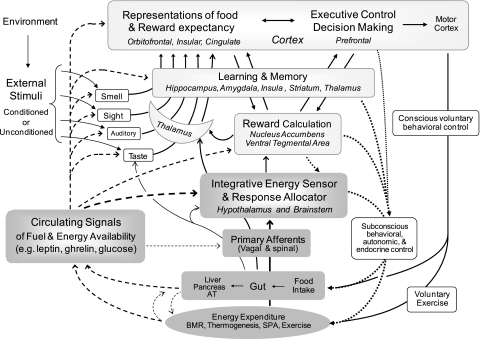Fig. 1.
Schematic flow diagram showing the relationship between the classical homeostatic regulator (dark gray boxes) and neural systems involved in reward, cognitive, and executive functions (light gray boxes). Note that humoral (broken lines with open arrows) and neural (full lines with open arrows) signals from peripheral organs handling energy assimilation and metabolism not only feed back to the hypothalamus and brainstem, but also to sensory and corticolimbic structures. Similarly, effector pathways can be accessed not only from hypothalamus and brainstem, but also from a number of corticolimbic structures (broken lines with closed arrows).

